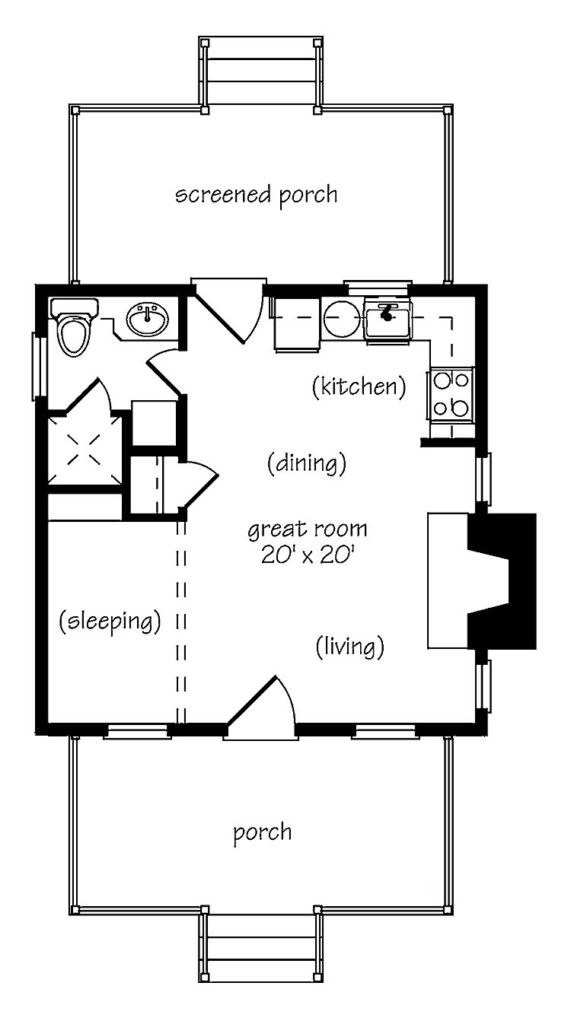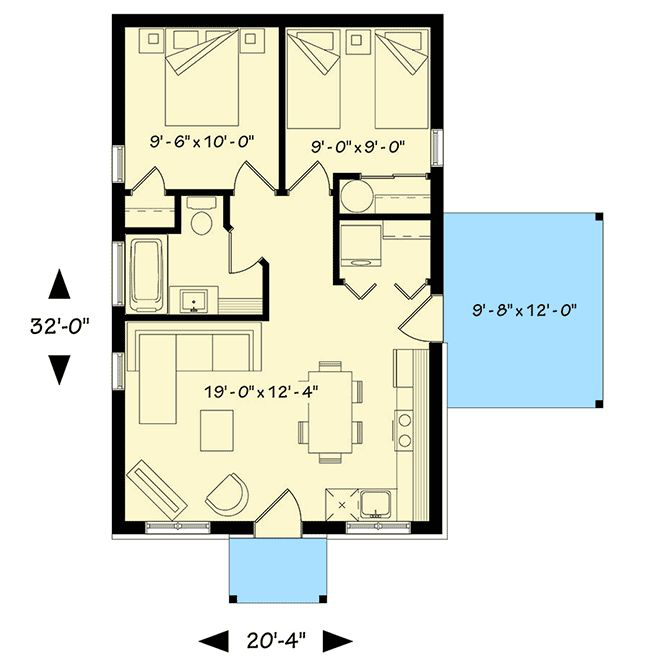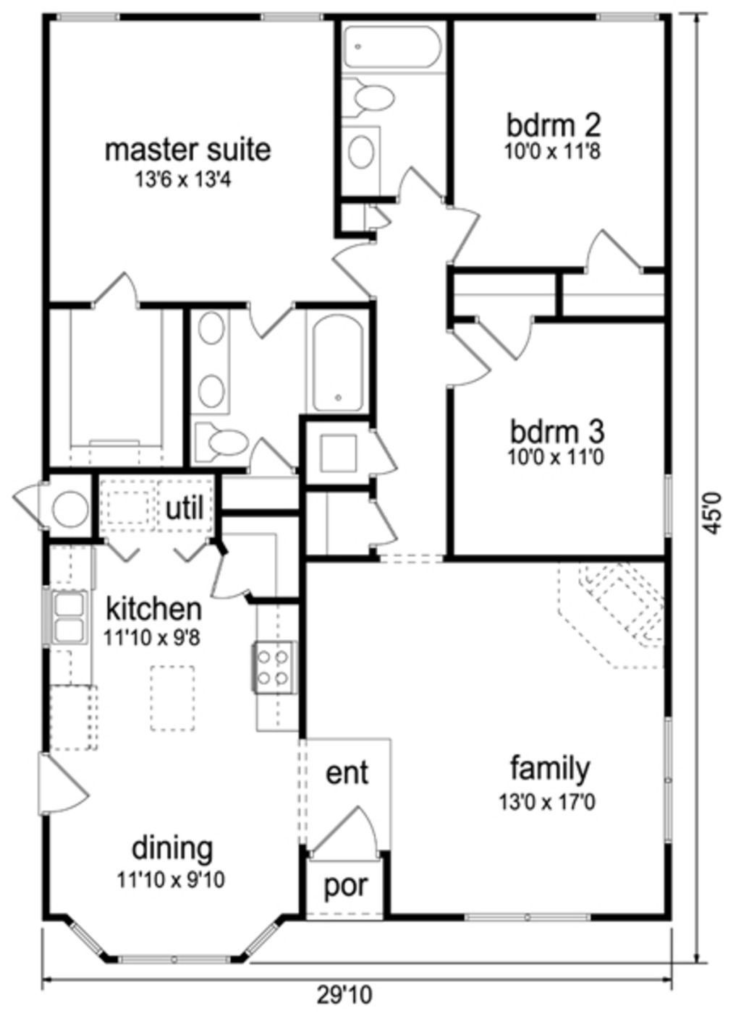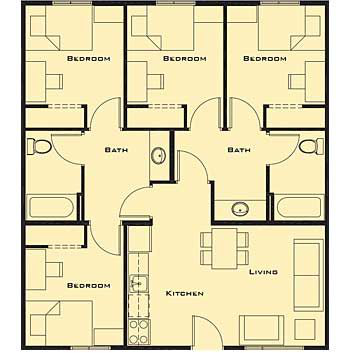There are many different Types Of Tiny Houses Floor Plans. You can choose from a one-bedroom floor plan to a three-bedroom plan. You can even go as far as choosing a 4-bedroom plan! Here are some ideas to help you get started. Just remember that a small house doesn’t have to be boring! Read on to find out more about the many different styles and types of Tiny Houses.
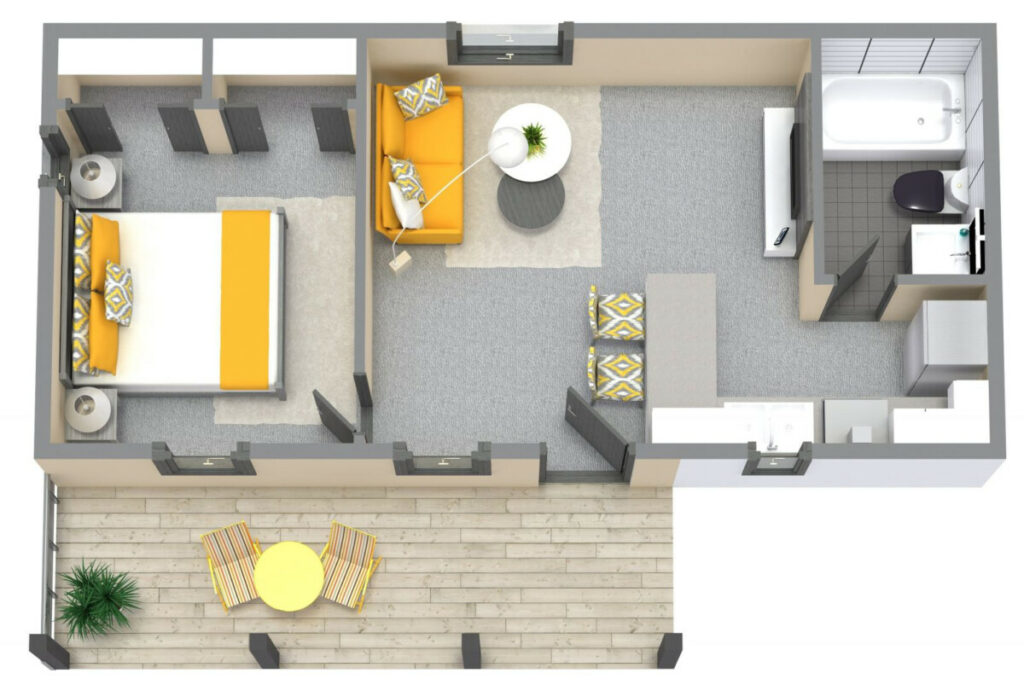
1-Bedroom Tiny House
If you are thinking about building a one-bedroom tiny house, you should focus on functional elements such as extra storage. A platform bed with drawers beneath can double as linen storage and bedside tables with drawers can be used as extra storage. Closet systems are also an excellent addition. A pedestal sink can be replaced with a vanity with storage drawers and storage behind the mirror. Adding side tables with drawers for magazines and remotes is a great way to add more storage and functionality to your home.
If you have a family, you should consider one of the two-bedroom tiny house floor plans. This floor plan has a great room and a covered porch. You may also include a dining/workspace and a bathroom. You can also add a kitchen and pantry to make your tiny home more functional and convenient. Once you’ve made your decision about which floor plan is best, you can start brainstorming. Keep in mind that tiny house floor plans are not step-by-step building plans.
The first model is the Starter Home. This is a one-room tiny home that has a loft in the loft. The Starter Home’s footprint is 14 by 17 feet and measures 238 square feet. Special architectural features such as a 16-inch-high ceiling, an open floor plan, and a loft-style loft make it feel much larger than its actual size. There’s also a shower and composting toilet inside.
There are also some beautiful one-bedroom tiny house floor plans that showcase shared spaces. If you have limited space and want a tiny house that provides more than one bedroom, try the Ecocapsule. Its floor plan doesn’t include detailed written information, but its visuals make it easy to understand its design. The Ecocapsule tiny house was designed by Slovakia-based Nice Architects. It features a unique pod shape and solar panels and a mini windmill.
2-Bedroom Tiny House
These two-bedroom tiny house floor plans are perfect for two people. With an open-concept living space and one large bedroom at the opposite end, the plan is great for two roommates. Alternatively, the second bedroom can serve as an office or guest room. The kitchen features an L-shaped design and a sink and range. There’s also a handy snack bar in the kitchen, and a full bath with a shower.
You can include under-bed storage in your tiny house floor plan. The bed base itself can be used as under-bed storage. You can add under-bed storage to almost any part of the tiny house. You may even have enough space for an extra closet! With these floor plans, you can enjoy a cozy sleep in a tiny house! You’ll love your new space! And don’t forget about your budget! There are plenty of ways to save money on housing.
If you plan to have a family or entertain more often, you should look into adding another room to the floor plan. More bedrooms mean more space and you won’t have to feel cramped! Adding a second bedroom will preserve the open feel and allow you to convert it as your needs change. This way, you can enjoy all the benefits of a tiny house while enjoying the space in it! If you’re looking for a plan that won’t break the bank, check out these two-bedroom floor plans.
A two-bedroom tiny house floor plan gives you lots of options, including guest rooms, dining spaces, and kitchens. These homes are ideal for couples who want a guest room as well as space for their own guests. They often feature full-sized beds and separate bar seating. There are many other options available for these tiny homes, including floor plans that have a loft for living spaces. If you’re considering building a tiny home, check out the tips in this book.
3-Bedroom Tiny House
If you’re looking to downsize your home, consider a 3-bedroom Tiny House. With just over a thousand square feet, they’re beautiful and offer everything the family man needs. You won’t miss the extra space, and you’ll have all the modern amenities of a larger home. Whether you’re planning to live in your Tiny House for years or just temporarily, a floor plan with three bedrooms is a great place to start.
Three-bedroom tiny house floor plans offer an unusual idea – a loft with twin beds for children and a giant queen bed for the parents. This layout works well with older children, as there’s space for a bunkbed for a baby or crib. The kitchen is a decent size, with a big, handy sink. If you need more space, consider building a loft where a second mattress can be placed.
When you’re designing a floor plan for a 3-bedroom Tiny House, consider how many people you’ll be hosting and how much room each person will need. If you’re planning to live with your partner, you may need an additional room for guests. If you’re planning to travel with your family, you may not know what amenities you’ll need for a third bedroom, so a floor plan with extra space might be the best option.
A three-bedroom Tiny House is the perfect size for a family, especially if there’s no room downstairs. Three bedrooms are separate areas in a Tiny House that will help keep children and adults separate. The bedrooms should be separated from each other, but there should still be common areas that can serve as buffers between siblings and friends. This way, you won’t have to worry about anyone arguing. Whether you want a small or a large Tiny House, there’s a floor plan for you.
4-Bedroom Tiny House
Four-bedroom tiny house floor plans are great for accommodating a large family. They provide enough space for a queen-size bed and two twins and include a full kitchen and dining room. Many plans also include a full bathroom with a corner shower. A four-bedroom tiny home will fit a family with three kids, including a baby. It can also accommodate a small office or studio. There are many floor plans available to choose from, including one with a loft area.
If you’re looking for a simpler lifestyle, a cabin plan may be the right fit. At twenty feet wide by twenty-four feet deep, the tiny cabin floor plan includes 480 square feet of living space. The plan includes a kitchen, living room, and bathroom. It also includes a master bedroom. This plan is also perfect for those looking to escape the hustle and bustle of the city. One can use these cabin plans for an extended stay or to enjoy the outdoors.
A two-story floor plan is great for a family with two kids. You can create a full dining and kitchen area. In addition, you can create a home office or full-size fold-out bed for guests. For a family with four kids, you should opt for a three-story floor plan. It includes a master bedroom, a combined kitchen and dining area, and a master suite. For added space, you can include a washer and dryer nook.
Depending on your family’s needs, you may choose to build a four-bedroom tiny house. You may have to make a few changes to the original floor plan, but the process is easier than ever. Tiny houses are no longer just for singles or couples. Adding a room or two is a great way to make the most of limited space. In fact, some of the best tiny homes are even four-bedroom!
5-Bedroom Tiny House
There are several different types of tiny house floor plans. If you have a family, a two-bedroom floor plan might be the perfect solution. It includes a covered porch, a spacious living room, and a kitchen with prep space. This plan can accommodate a family of four. You can customize the layout to fit your specific needs. If you’re looking to start building your own tiny home, consider a two-bedroom floor plan. This plan features a shared dining/living room, a covered porch, and enough storage for a small house.
The most common challenge that a five-bedroom tiny house face is the growing family. The biggest challenge will be sleeping and eating, so plan ahead for the necessary space. Make sure there’s enough storage for all the family’s food and clothing. Also, keep in mind that your children will require separate sleeping quarters, so you’ll need to design a room with multiple beds. The bathroom, of course, should be small and convenient for everyone.
A five-bedroom tiny house floor plan can be built for about four to six people. The tiny home itself has two levels, with one floor being the bedroom and the other a loft area for the children. The design includes a bathroom and kitchen, and there’s plenty of space for a pull-out couch or a baby crib. The house also has a good-sized kitchen and a large handy sink.
If you’re planning on building a tiny house, you might want to consider rotating your wardrobe. Many people opt to have a summer and winter wardrobe and store their bulkier winter clothes in a storage trailer. In such a case, the space could be used to store additional items. This can make your tiny house more permanent and comfortable. Then again, you could sell it for a higher profit. There are many advantages to living in a tiny home.
FAQ
Is Tiny House Worth It?
If you’re thinking of downsizing your lifestyle and settling into a tiny house, you may be wondering: Is it worth it?
Tiny houses are becoming a popular choice among people who want to live a more adventurous life without a hefty mortgage. Here are a few things to consider before you make your decision.
Are Tiny Houses The Future?
As a response to the environmental crisis, tiny homes are appealing to a wide audience. They require fewer materials to build, are more energy-efficient, and cost less to run than traditional single-family houses. Despite their sustainability benefits, they aren’t always a practical choice for the average person. Fortunately, there are solutions to meet the needs of those who might not be able to afford a tiny house.
What Do Tiny Houses Do For Plumbing?
One big thing that a tiny house does differently from a standard house is that they are not usually based on fixed foundations. This means they won’t be able to have the same plumbing system that houses on fixed foundations have.
Where Tiny Houses Are Legal?
In every city, town, and village in the United States, houses must abide by zoning laws. These are rules that set the purpose of an area, define adequate housing, and set a maximum occupancy based on size.
Is Tiny House Living Worth It?
While a tiny home is a great lifestyle choice for many people, it comes with some hidden costs. Depending on where you live, you may need to pay for the land, utilities, or even rent.

